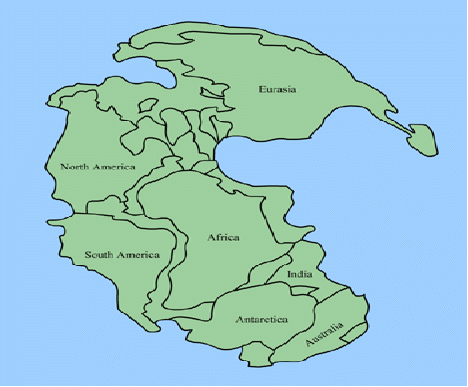The continents are not fixed on the Earth's surface. They are slowly moving – typically a few cm each year, though in some places the movement is up to 20cm per year. The continents themselves are not in fact single structures. The Earth's surface is made up of a series of large rocky 'islands' – the Earth's crust - floating on a sea of magma – the interior of the Earth. The magma is moving, and creates drag on the underside of the plates, making them move. Where the plates move apart, magma from the Earth's interior can move into the gap, eventually cooling and creating new crust. In other areas, one plate moves under another, partially pushing it up and creating raised land and mountain ranges.

When the Earth formed, it is believed there was only one landmass, named 'Pangea', shown below.

This broke up, creating the continents, which began to move apart via the process described above. The continents began to 'drift'. The theory of continental drift was first proposed by a German, Alfred Wegener. Many people dismissed his ideas as there was little evidence for them, but a series of surveys conducted in the 1950's by the US navy showed that there existed ocean ridges where the ocean floor on either side of the ridge is moving apart, and magma moving into the gap to create new ocean floor.
